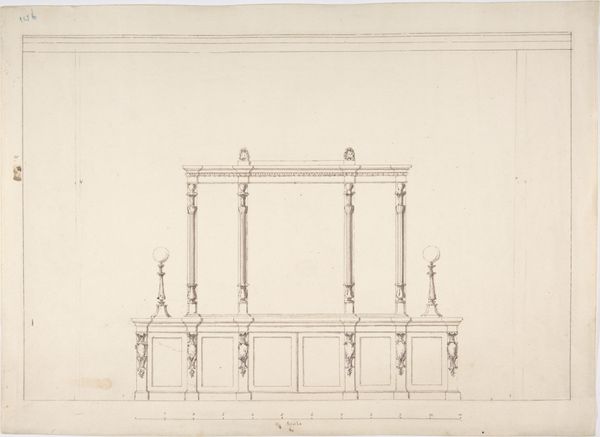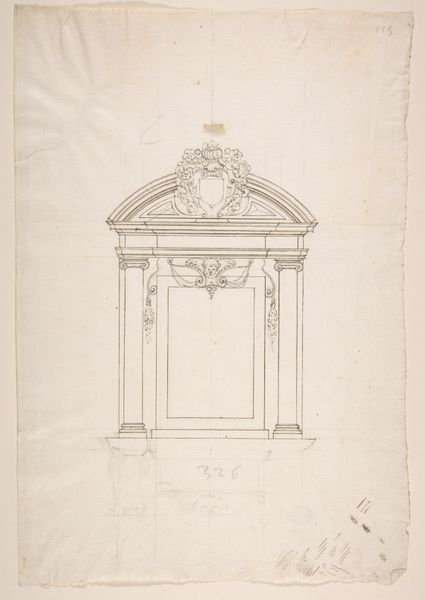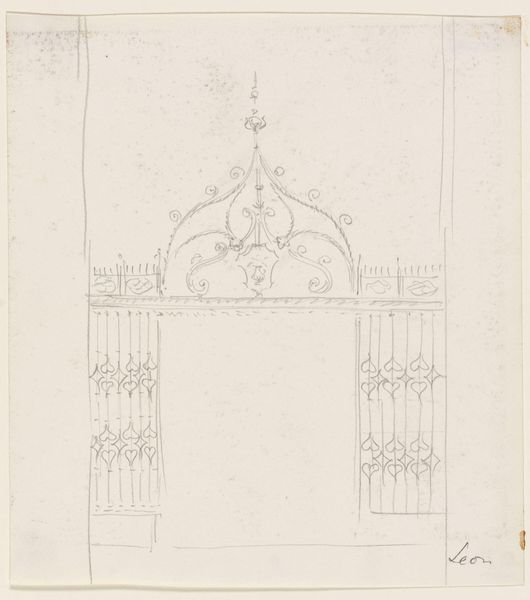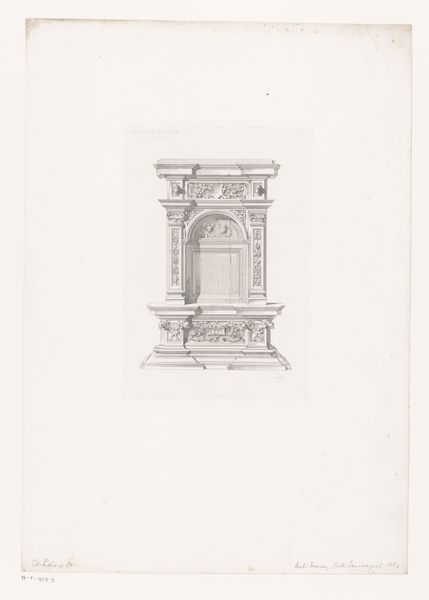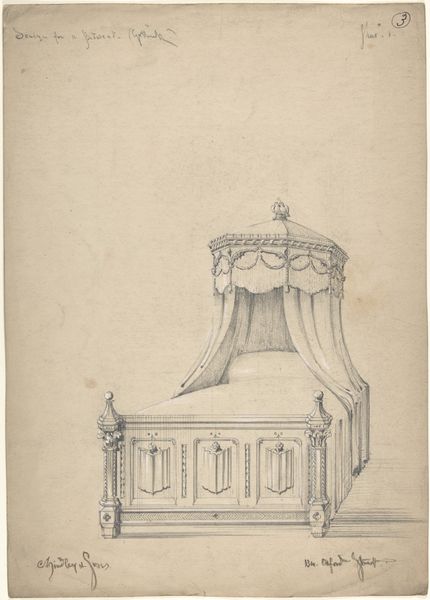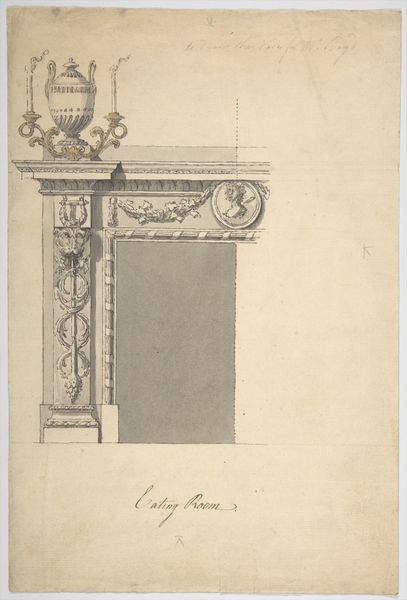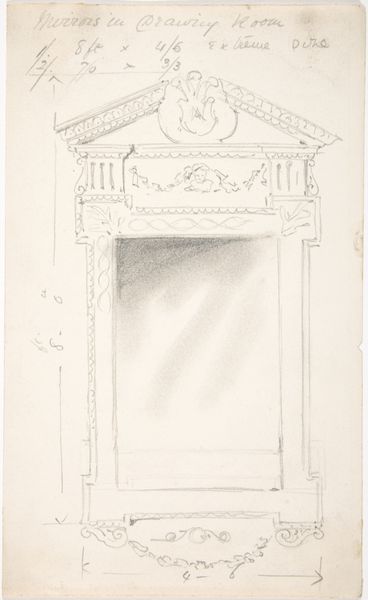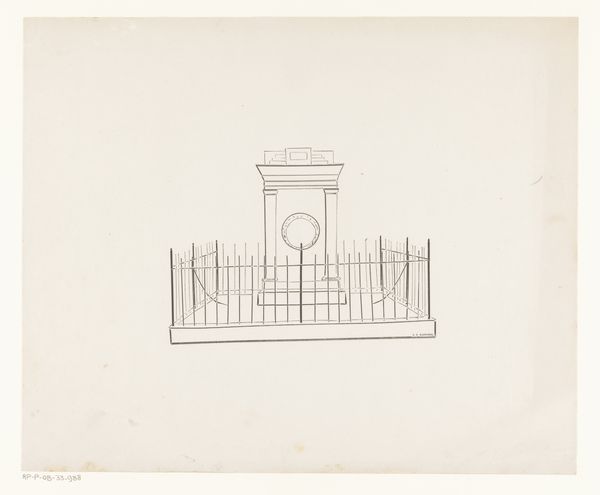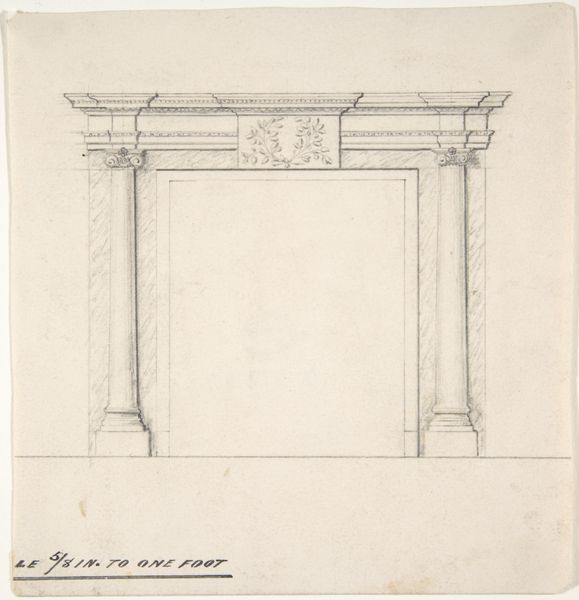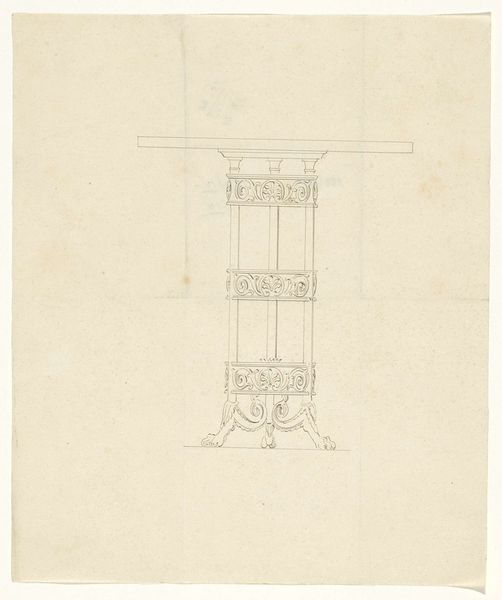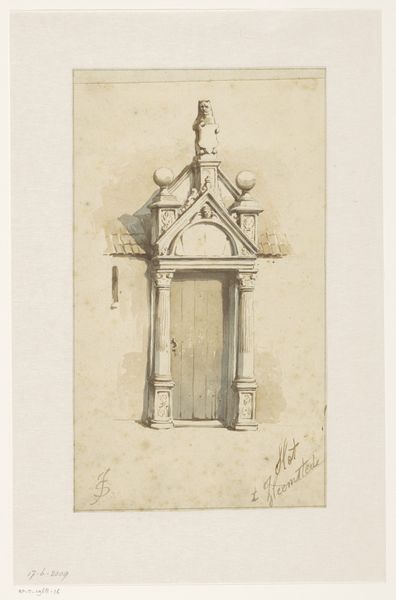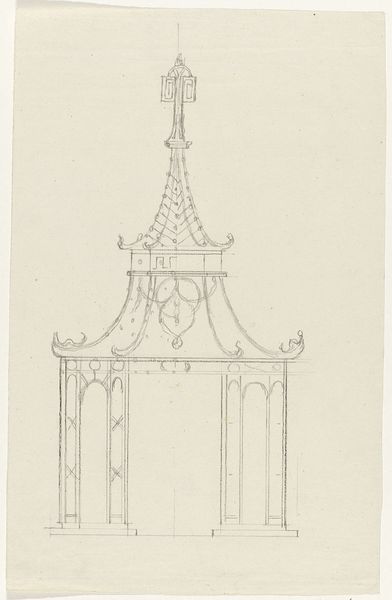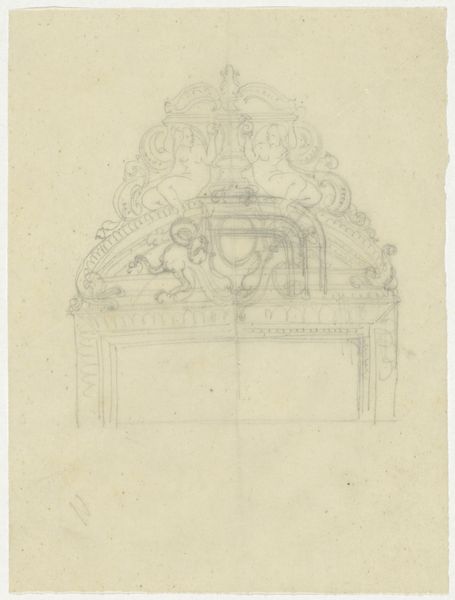
Ontwerp voor illuminatie van het West-Indische buitenhuis te Amsterdam, 1788 1788
0:00
0:00
drawing, pencil, architecture
#
architectural sketch
#
drawing
#
neoclacissism
#
etching
#
pencil
#
architecture drawing
#
architecture
Dimensions: height 220 mm, width 218 mm
Copyright: Rijks Museum: Open Domain
Editor: This is "Ontwerp voor illuminatie van het West-Indische buitenhuis te Amsterdam, 1788," or "Design for Illumination of the West Indies Country House in Amsterdam, 1788," a drawing made with pencil and etching by Hendrik G. van Raan. It feels almost skeletal in its simplicity, just lines suggesting form. What sort of symbols and meaning do you see here? Curator: It's fascinating how this relatively simple sketch embodies the grand aspirations of Neoclassicism. Consider the symmetry, the geometric precision—hallmarks of a worldview that sought to impose order and reason onto the world. The illumination, itself, is symbolic. What is it meant to reveal, and what to conceal? Editor: I hadn't considered the act of illuminating itself as meaningful! The little circles lining the structure almost look like stars, but I don’t know what they could represent. Curator: Think about it in relation to the West Indies connection. Amsterdam’s wealth at the time was heavily intertwined with colonial ventures. This "country house" would likely be owned by someone who benefitted from that system. Do you see how this architectural sketch becomes a vessel of complex historical forces, the structure both celebrating and masking those connections? Editor: It's like the bright lights are meant to distract from the shadows that built that wealth. I'm beginning to understand how symbols can tell more of the story than what's on the surface. Curator: Precisely. Architecture often projects an idealized image, concealing uncomfortable truths behind a façade of elegance and order. Editor: Thank you for shedding light on these layered meanings. Now, when I look at architecture, I will consider what the design symbolizes. Curator: A useful exercise in considering whose stories are visually told and whose remain in shadow.
Comments
No comments
Be the first to comment and join the conversation on the ultimate creative platform.
